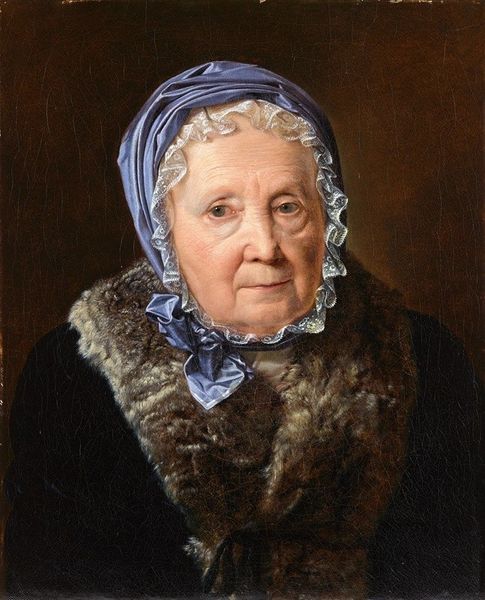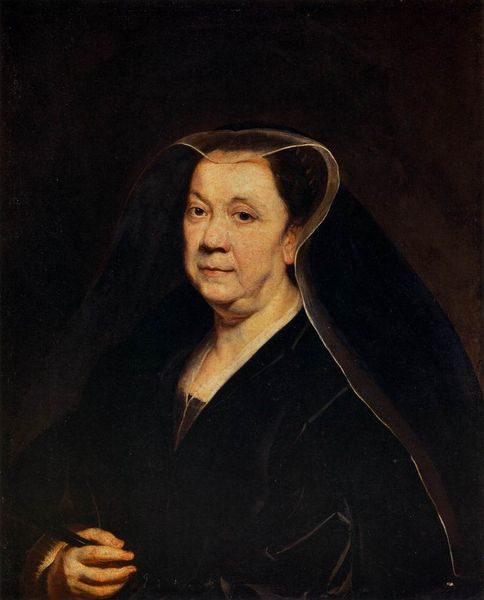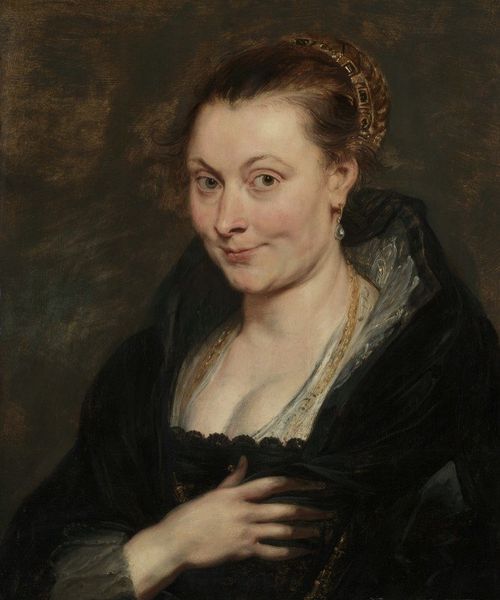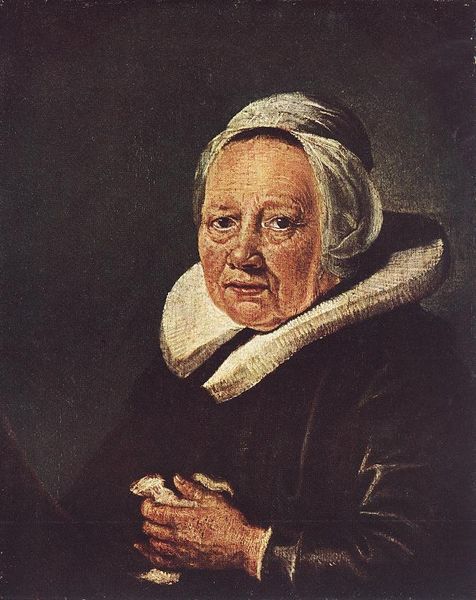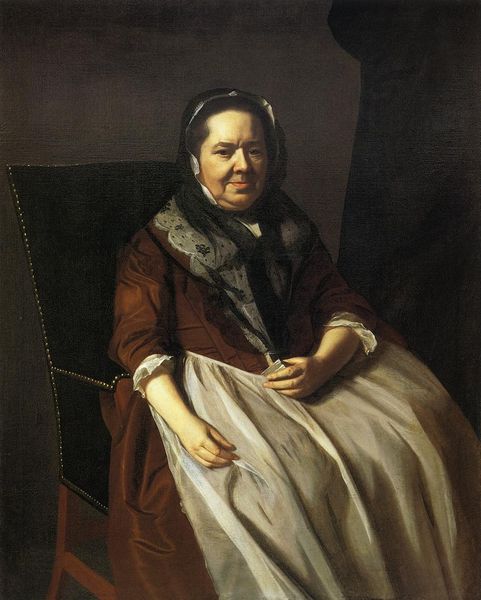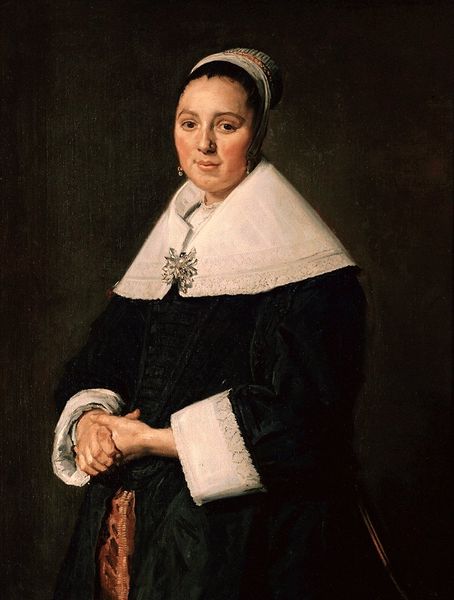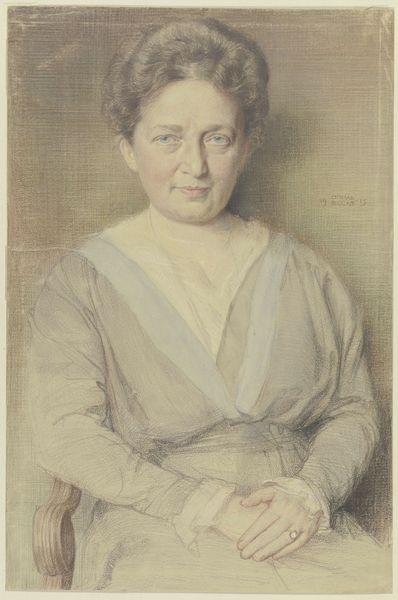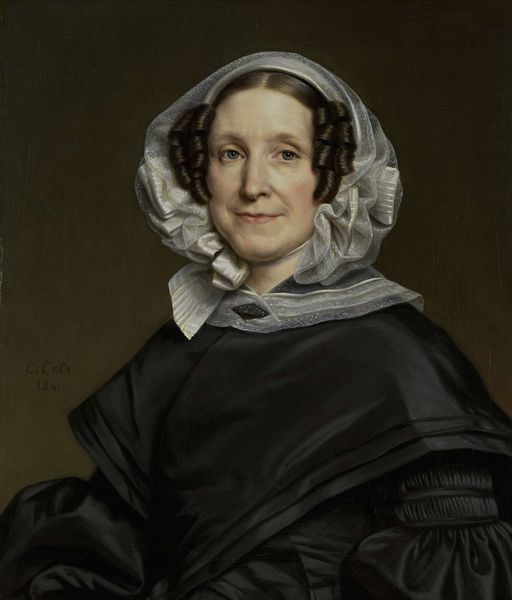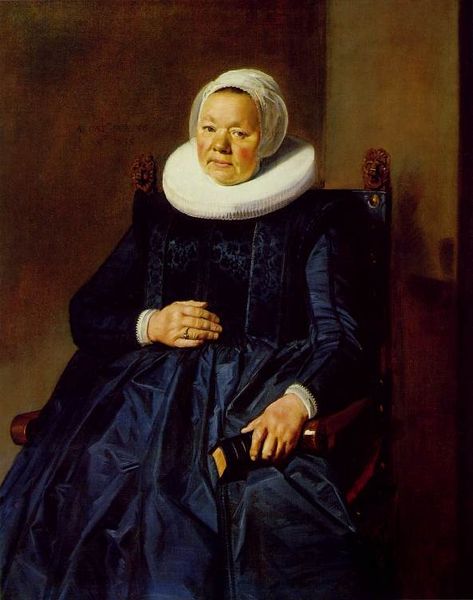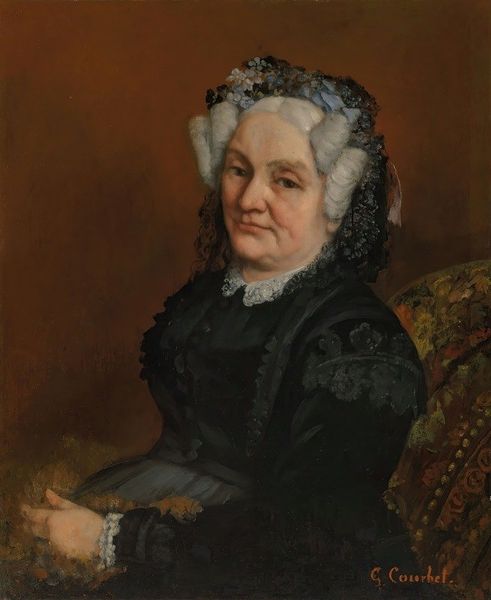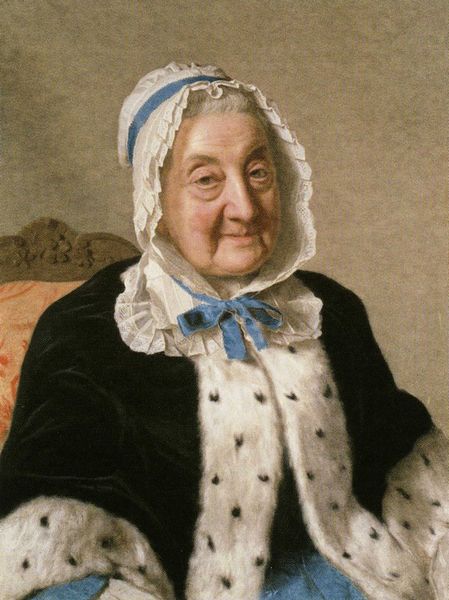
Copyright: Public domain
Editor: Here we have Vasily Polenov's oil on canvas, "Portrait of V. N. Voeikova, the grandmother of the artist," created in 1867. It strikes me as quite intimate and tender, almost like a treasured memory. What stands out to you as you examine this piece? Curator: The portrait is bathed in shadow, which immediately suggests a reverence for the past and perhaps a meditation on the passage of time. Observe how the grandmother’s face, though realistically rendered, seems to emerge from this darkness. Doesn’t it remind you of ancestral veneration practices we see across different cultures, where ancestors are both physically absent and symbolically ever-present? Editor: I see what you mean! The dark background certainly pushes her forward, yet softens the overall feel. Curator: The grandmother's garments and head covering, while simple, also whisper stories. Note how lace and subtle fabrics become potent symbols of a bygone era and the social standing she possessed. Ask yourself: what is lost, but also retained, as one generation fades and another emerges? Editor: That's fascinating, the material objects acting as a memory bank! So much is communicated beyond just her physical likeness. Curator: Precisely! It speaks to how humans encode entire cosmologies within images and objects. What do you think viewers in 1867 would recognize or project onto this image versus how we interpret it today? Editor: I guess they would relate more directly to the fashion and societal norms, things we now see through the filter of history. Curator: Indeed. Each viewing, throughout history, reshapes its cultural weight. This simple family portrait unveils much more than what first meets the eye! Editor: Absolutely. Thinking about the cultural layers transforms how I understand portraiture in general. Thanks!
Comments
No comments
Be the first to comment and join the conversation on the ultimate creative platform.
